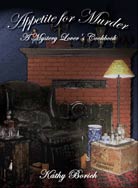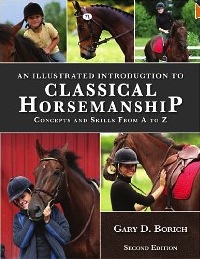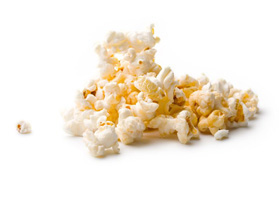The Artist: Blood and Sand Cocktail
Year Released: 2011
Directed by: Michel Hazanavicius
Starring: Jean Dujardin, Bérénice Bejo, James Cromwell, John Goodman
(PG-13, 100 min.)
Academy Awards (2012)
Best Picture
Actor in a Leading Role: Jean Dujardin
Directing: Michel Hazanavicius

"No act of kindness, however small, is ever wasted." Aesop: “The Lion and the Mouse”
At last a film willing to take some big risks. Not only is it about a time most of us neither care about nor remember – Hollywood’s silent film era – but it tells the tale in that same style, black and white and almost wordless.
No wonder I went to this movie like a toddler to nap time. But what a delightful surprise!
Talk about an unlikely scenario. This French film captures the spirit of that age almost better than Hollywood did itself. And we are spared the usual Gallic undertones and dour faces, since both French stars have smiles that light up the screen.
Like all great story telling, it is not the story itself, but how it is told that captures us. (Let’s not forget that Shakespeare borrowed almost all his plots from old poems, legends, or history.) In fact, the story itself is almost clichéd:
Hollywood 1927. George Valentin (Jean Dujardin) is a silent movie superstar. The advent of the talkies will sound the death knell for his career and see him fall into oblivion. For young extra Peppy Miller (Bérénice Bejo), it seems the sky's the limit - major movie stardom awaits.
Yet The Artist defies expectations from the get go. First of all, both George and Peppy are real hams, brimming over with pride and ego like two glasses of champagne. And, strangely enough, we can’t help liking both of them.
George breathes in the applause, preening across the stage after a showing of his latest hit like an adolescent high fiving it in the end zone. Only reluctantly, almost as an afterthought, does he allow his co-star to take her bows. His lavish Hollywood mansion features a bigger than life portrait of him and Uggie, that Velcro dog, his scene-stealing Jack Russell who never leaves his side on the screen or at home.
Peppy Miller gets her moment of fame accidentally when she falls into the silent screen star as he greets his thronging fans behind the rope line. Instead of demurely disappearing after her clumsy entrance, in the true spirit of shameless self-promotion, Peppy mugs it up for the camera.
Even George is charmed. His ruffled frown fades into that toothsome smile that is not diminished one bit by the fact that he knows its effect and just when to turn it on.
However, that 100 mega watt grin doesn’t have the desired effect on his wife the next morning when she sees his embrace of the falling Peppy spread all over the front pages. The assist from Uggie, all puppy-dog eyes as the two team up to charm may not work on her, but it certainly does on us. We are hooked. On George and the dog.
Take away all the gimmicks that the celluloid world relies upon and we have pared life down to its essence. The very restrictions imposed, like the meter and rhyme restrictions in a sonnet or the desert harshness that bred the Arabian horse, create a terrible kind of beauty.
In an eclectic way, a certain Zen understanding permeates the silence of this French production about Hollywood. We watch all those lips flapping on the screen and we realize how banal most conversation is.
Much more is said by the images and staging, and the delicate art of pantomime that recalls the early days of Vaudeville. One such scene takes place in George’s empty dressing room, where a smitten Peppy drops in to thank him for a favor on the set. And we see all that ever can be said for wistful longing when she threads her arm into his dinner jacket sleeve and gently embraces herself.
Another telling scene occurs just after George has learned the studio will stop producing silent films. Just like that he is out of a job. Peppy, in the mean time, is beginning to make her own way in the talkies. The camera pans as she meets him on a large staircase landing. He on the way down, she on her way up.
The clamoring sound that breaks into the silence to shock us as well as George is still another stroke of creativity, his nightmare suggesting that sometimes dreams can foretell the future.
Then there’s the barroom scene where other creatures take the place of pink elephants. I think you will agree that these guys are much more effective.
And perhaps the most poignant scene of all uses reflections, real and illusionary, to underscore George’s loss in this play within a play. The shabby George has reached his nadir. All the props from his old life are gone. He looks in a shop window – perhaps it is the pawnshop that gave him a few bucks for his old tuxedo – and he sees his reflection. The camera focuses on that shop window, the reflection of his head somehow floating above that spiffy tux, the shabby suit sill visible but dim. And a smile crosses his lips as he remembers the shadow of that old life.
This is truly one of the best films of 2011, rivaling Hugo, an American’s tribute to a French filmmaker.
C'est la vie.
—Kathy Borich
Trailer
Film-Loving Foodie
George Valentin may remind us of silent film stars Douglas Fairbanks or Charlie Chaplin, but his name recalls the legendary Rudolph Valentino. George might not share the smoldering looks of this “Latin Lover,” but his razor sharp profiles as well as his name, suggests a link. Also interesting is the fact that our film opens in 1927, just a year after the untimely death of Valentino at age 31.
Let’s enjoy a Hollywood cocktail named after the film Blood and Sand, critically acclaimed and the top grossing film of 1922, where Valentino played a bullfighter in Spain.
Salud!
Blood and Sand Cocktail
“Blood and Sand." the 1922 film starring Rudolf Valentino (billed in that one as “Rodolph”), is a classic silent-movie romance. Blood and Sand the cocktail is one of the few classic mixed drinks that includes Scotch. It’s not the easiest leading man to marry, but improbably its wife, sweet vermouth, and mistress, cherry brandy (Cherry Heering is probably the easiest to find; Cherry Marnier is also good in this recipe), get along really well. Modern tastes might prefer slightly less of each of the ladies (try an ounce each of blended Scotch and orange juice and 3/4 ounce each of cherry brandy and sweet vermouth).
Pour into a cocktail shaker 1 jigger each Scotch whisky, cherry brandy, sweet vermouth, and orange juice. Shake well with cracked ice and strain into cocktail glasses.
Recipe Source: gourmet.com



 Featured
Featured